Radiant heating systems have gained popularity in recent years as a more efficient and comfortable alternative to traditional heating methods. These systems work by emitting heat directly from a surface, such as ceramic tiles, to heat the surrounding space.
This article explores the benefits of combining radiant heating with ceramic tiles and highlights how this combination can enhance durability, create a cozy environment, ensure even heat distribution, and transform living spaces with style.
One of the key advantages of radiant heating systems is their ability to enhance the durability of ceramic tiles. Unlike forced-air heating systems, which can cause fluctuations in temperature and moisture levels, radiant heating provides a consistent and gentle heat source that helps to prevent cracks, warping, and other damage to ceramic tiles.
This makes radiant heating an ideal choice for areas that experience high foot traffic or moisture, such as bathrooms or kitchens. Additionally, the even distribution of heat from the radiant system helps to maintain a stable temperature throughout the space, reducing the risk of thermal stress on the tiles and prolonging their lifespan.
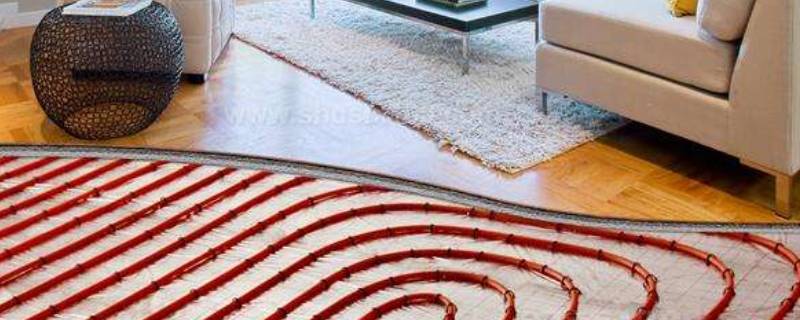
Radiant heating offers numerous advantages, including efficient and even distribution of warmth throughout a space, resulting in a comfortable and consistent temperature. Unlike traditional forced-air heating systems that rely on blowing hot air into a room, radiant heating operates by emitting heat directly from a warm surface. This method ensures that heat is evenly distributed, eliminating cold spots or drafts commonly experienced with other heating systems.
Moreover, radiant heating does not rely on the circulation of air, reducing the amount of dust, allergens, and pollutants that may be circulated throughout the space. This makes it an ideal choice for individuals with allergies or respiratory sensitivities.
Additionally, radiant heating is energy-efficient and cost-effective. The heat emitted from the warm surface warms objects within the room, including walls, furniture, and floors. These objects then radiate the heat back into the room, creating a cycle of warmth that requires less energy to maintain a comfortable temperature. Compared to forced-air systems that can lose heat through ductwork or inefficient insulation, radiant heating minimizes heat loss, resulting in lower energy consumption and decreased utility bills.
Furthermore, the ability to zone different areas of a home or building allows for individual control over the temperature in each space. This customization not only increases energy efficiency but also offers greater comfort and flexibility for occupants.
Overall, the benefits of radiant heating make it a highly efficient and cost-effective choice for achieving a comfortable and consistent temperature in any space.
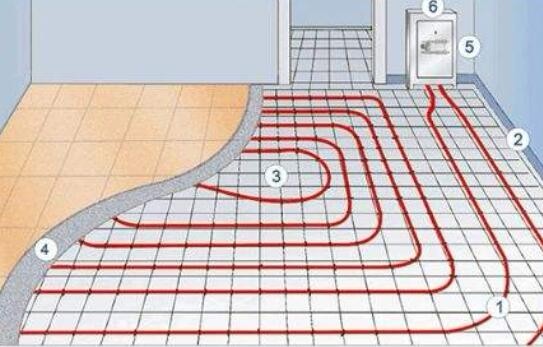
To enhance durability, the use of ceramic tiles can be advantageous when paired with a system that provides even heat distribution. Ceramic tiles are known for their resilience and ability to withstand high temperatures, making them an ideal choice for radiant heating systems. When installed correctly, these tiles can effectively distribute heat throughout a room, ensuring a comfortable and consistent temperature.
- Ceramic tiles are highly resistant to cracking and breaking, even when exposed to extreme temperature changes. This durability ensures that the tiles will not be easily damaged by the heat generated by the radiant heating system, providing a long-lasting solution for heating needs.
- Additionally, ceramic tiles have a low thermal expansion coefficient, meaning they expand and contract minimally with changes in temperature. This characteristic helps to prevent any warping or distortion of the tiles over time, further enhancing their durability.
- Furthermore, ceramic tiles have excellent heat conduction properties, allowing them to efficiently transfer the heat from the radiant heating system to the room. This ensures that the tiles themselves do not become excessively hot, reducing the risk of burns or discomfort for occupants.
Overall, the combination of ceramic tiles and a radiant heating system offers a winning solution for enhancing durability. The tiles' ability to withstand high temperatures, resist cracking, and efficiently distribute heat makes them an ideal choice. Additionally, their low thermal expansion coefficient and excellent heat conduction properties ensure a long-lasting and comfortable heating solution for any space.
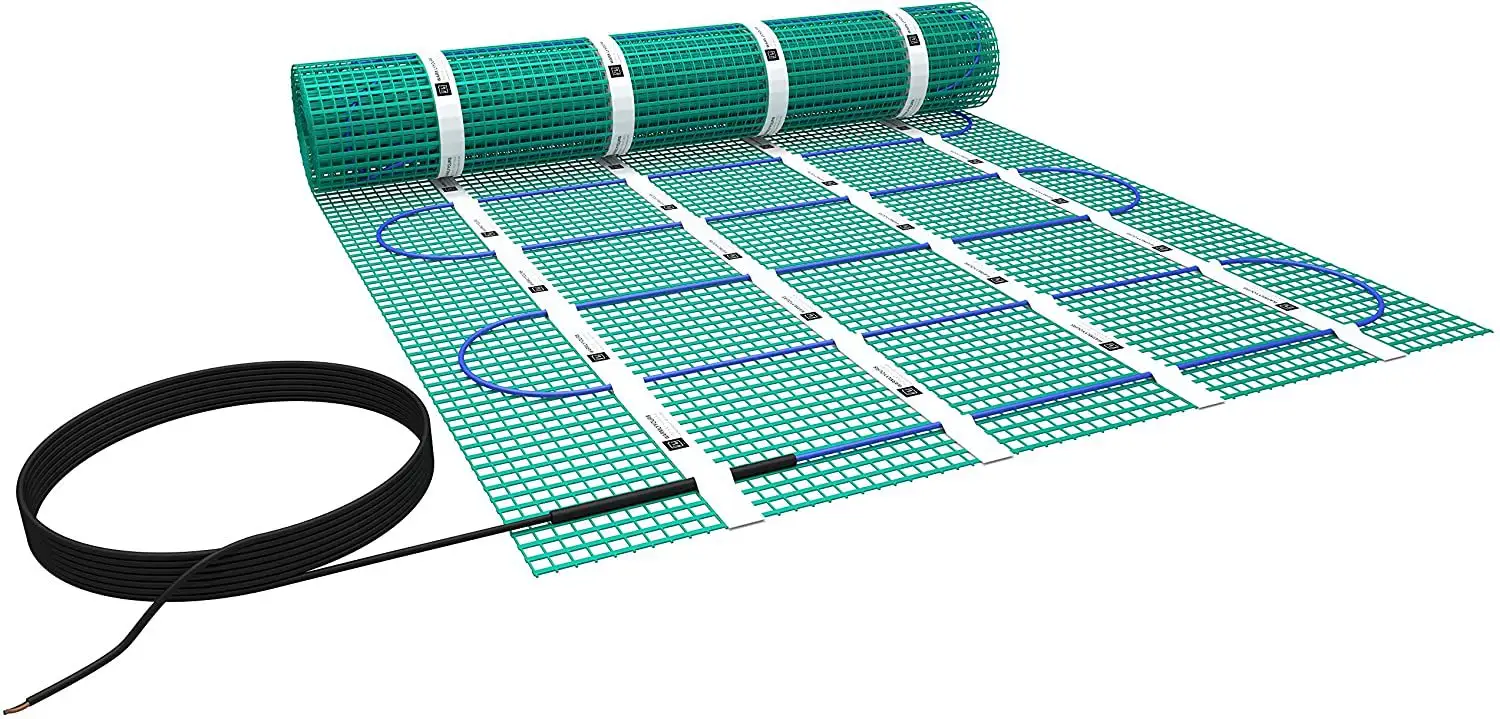
By utilizing a system that efficiently distributes heat, one can create a warm and inviting atmosphere within a space.
Radiant heating, when combined with ceramic tiles, offers an effective solution to achieve this desired comfort. Radiant heating works by using a network of pipes to circulate hot water or electrical cables beneath the flooring surface. As the heat radiates upwards, it warms the objects and people in the room, creating a cozy environment.
Ceramic tiles, known for their excellent thermal conductivity, further enhance this system by efficiently transferring and retaining heat. They absorb the heat from the radiant heating system and then release it slowly, providing a consistent and comfortable warmth throughout the space.
In addition to the efficient distribution of heat, the combination of ceramic tiles and radiant heating also contributes to energy savings. Ceramic tiles have a low thermal resistance, which means they allow heat to pass through easily. This property reduces the amount of energy needed to maintain a desired temperature, resulting in lower heating costs.
Furthermore, the slow heat release of ceramic tiles helps to maintain a stable temperature, reducing the need for frequent adjustments to the heating system. This not only saves energy but also ensures a comfortable and consistent environment for the occupants.
Overall, the use of ceramic tiles with radiant heating systems creates a cozy and energy-efficient space, making it a winning combination for those seeking both comfort and cost savings.
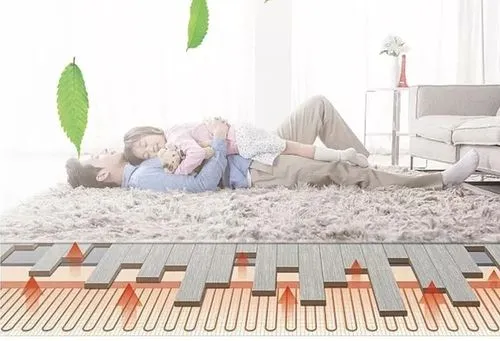
Utilizing an efficient heat distribution system, one can achieve a consistent and comfortable warmth throughout a space with the combination of ceramic tiles and a radiant heating system.
Radiant heating is a method of heating that involves the use of electric cables or water-filled tubing installed beneath the flooring surface. This system works by emitting heat directly from the floor, which then radiates upward to warm the surrounding air and objects in the room. By employing this technology in conjunction with ceramic tiles, which have excellent thermal conductivity properties, the heat can be evenly distributed across the entire floor surface.
One of the advantages of radiant heating is its ability to provide an even distribution of heat. Unlike traditional heating systems that rely on convection currents to warm the air, radiant heating delivers warmth directly to the floor and objects in the room. This eliminates the problem of cold spots or drafts commonly experienced with forced-air systems. With radiant heating, the heat is evenly spread throughout the space, creating a cozy and comfortable environment for occupants.
To further enhance the understanding and enjoyment of this topic, here are three sub-lists:
Benefits of radiant heating:
- Energy efficiency: Radiant heating systems are known for their energy efficiency, as they do not rely on ductwork or air circulation. This results in lower energy consumption and reduced utility bills.
- Improved air quality: Unlike forced-air systems that can distribute allergens and dust particles, radiant heating does not rely on air movement. This helps to maintain a cleaner and healthier indoor environment.
- Silent operation: Radiant heating systems operate silently, without the noise associated with traditional heating systems. This adds to the overall comfort and tranquility of the space.
Advantages of ceramic tiles:
- Durability: Ceramic tiles are known for their durability and can withstand heavy foot traffic and wear and tear. This makes them an ideal choice for high-traffic areas such as kitchens and bathrooms.
- Easy maintenance: Ceramic tiles are easy to clean and maintain. They are resistant to stains, scratches, and moisture, making them suitable for use in areas prone to spills or water exposure.
- Aesthetic appeal: Ceramic tiles come in a wide range of colors, patterns, and textures, allowing for endless design possibilities. They can enhance the aesthetic appeal of any space, providing a beautiful and timeless look.
Complementary features of ceramic tiles and radiant heating:
- Thermal conductivity: Ceramic tiles have excellent thermal conductivity properties, which allows them to absorb and evenly distribute heat from the radiant heating system. This ensures consistent warmth throughout the room.
- Compatibility: Ceramic tiles are compatible with radiant heating systems, as they can withstand the heat generated without warping or cracking. This makes them a suitable flooring option for use with radiant heating technology.
- Hygienic: Ceramic tiles are hygienic and easy to clean, making them a practical choice for spaces where cleanliness is important. When combined with radiant heating, they provide a hygienic and comfortable environment for occupants.
The combination of ceramic tiles and radiant heating offers a winning solution for achieving even heat distribution and creating a cozy and comfortable environment. The efficient heat distribution system of radiant heating, coupled with the thermal conductivity and complementary features of ceramic tiles, ensures consistent warmth throughout the space.
With the added benefits of energy efficiency, improved air quality, durability, easy maintenance, and aesthetic appeal, this combination provides a desirable heating solution for both residential and commercial spaces.
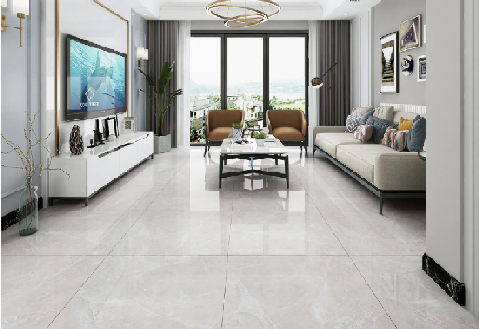
An effective solution for achieving a streamlined and aesthetically pleasing heating system involves the elimination of bulky radiators and vents.
Traditional heating systems often rely on radiators and vents to distribute heat throughout a space. However, these elements can be visually unappealing and take up valuable wall and floor space.
By utilizing radiant heating systems with ceramic tiles, the need for clunky radiators and vents can be eliminated.
Radiant heating systems work by using a network of pipes or electric heating elements installed beneath the flooring. These systems generate heat that is then transferred to the ceramic tiles, which act as a radiant surface. As the tiles warm up, they radiate heat evenly across the room, eliminating the need for bulky radiators or vents. This not only creates a more visually pleasing space but also allows for more flexibility in furniture placement and design choices.
In addition to their aesthetic benefits, ceramic tiles also have excellent thermal conductivity, meaning they can efficiently transfer heat from the radiant heating system to the room. This ensures that the heat is evenly distributed throughout the space, eliminating cold spots or uneven heating.
Furthermore, ceramic tiles are durable and resistant to changes in temperature, making them an ideal choice for use with radiant heating systems.
Overall, the combination of ceramic tiles and radiant heating provides a winning solution for those seeking a sleek and efficient heating system that eliminates the need for clunky radiators and vents.

Transforming your living space with style involves the implementation of a sleek and efficient heating system that eliminates the need for bulky radiators and vents, resulting in a visually appealing and functional environment.
By integrating ceramic tiles with radiant heating, homeowners can achieve a seamless and contemporary look while enjoying the benefits of a comfortable and evenly heated space. The use of ceramic tiles in conjunction with radiant heating allows for a more efficient distribution of warmth, as the tiles act as a heat conductor, absorbing and radiating heat evenly throughout the room. This eliminates the need for unsightly radiators or vents, freeing up valuable wall and floor space for other decorative elements or furniture arrangements.
To evoke emotion in the audience, consider the following bullet points:
- Experience the joy of walking barefoot on warm tiles, creating a cozy and comforting atmosphere in your living space.
- Enjoy the freedom to design your interior without limitations, as the absence of radiators and vents allows for a more versatile and aesthetically pleasing layout.
- Say goodbye to cold spots and uneven temperature distribution, as radiant heating ensures consistent warmth throughout the room, providing a truly inviting environment.
With the combination of ceramic tiles and radiant heating, homeowners can transform their living space into a stylish and functional sanctuary. Whether it's the delightful sensation of warm tiles underfoot, the freedom to unleash your creativity in interior design, or the guarantee of a cozy and evenly heated room, this winning combination offers a range of benefits that will truly enhance your living experience.
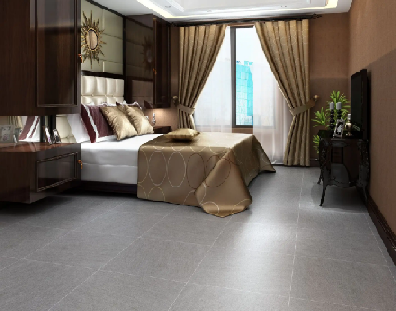
The future of home heating lies in the integration of sleek and efficient systems that eliminate the need for bulky radiators and vents, creating a visually appealing and functional environment. One such innovation is the combination of ceramic tiles and radiant heating. Radiant heating systems work by using electric coils or water tubes installed beneath the flooring surface to radiate heat evenly throughout the room. When paired with ceramic tiles, this technology offers numerous benefits for homeowners.
Firstly, ceramic tiles are an excellent conductor of heat, allowing for efficient heat transfer from the radiant heating system to the room. This means that the floor can be heated quickly and effectively, providing a comfortable living space in a shorter amount of time. Additionally, ceramic tiles have a high thermal mass, which means they can retain heat for longer periods. This characteristic allows the radiant heating system to operate at lower temperatures, resulting in energy savings and reduced heating costs. Moreover, ceramic tiles are known for their durability and longevity, making them an ideal choice for flooring. Their resistance to wear and tear ensures that the radiant heating system can be used for many years without the need for frequent maintenance or replacement.